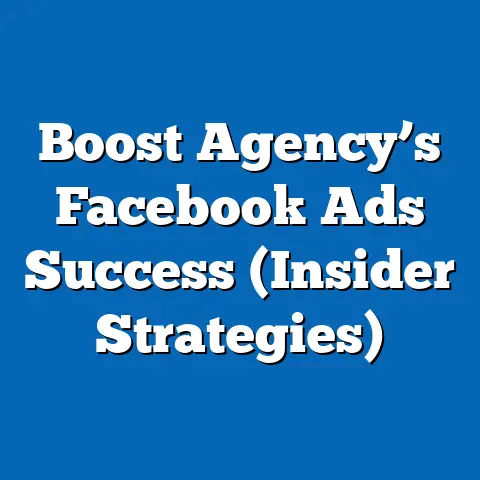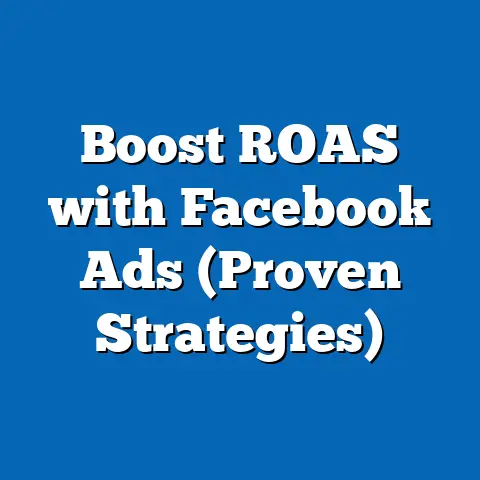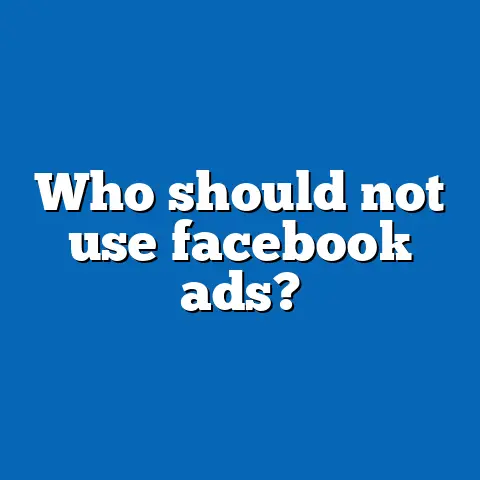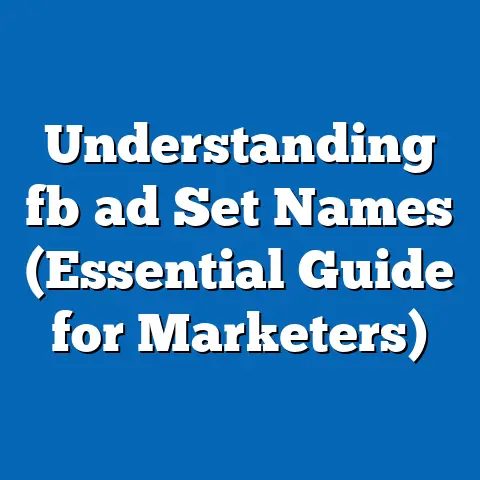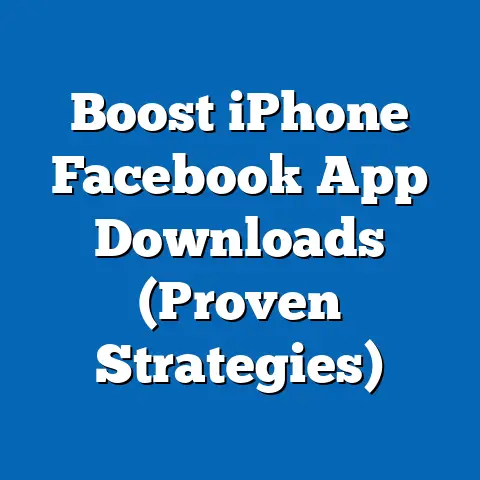Boosting Facebook Ads Explained (Unlock Reach)
I remember when I first started helping small businesses with their Facebook advertising. I met Jane, a passionate baker who poured her heart and soul into creating the most delicious artisanal pastries in town. She had the product down, no doubt. But her bakery, nestled on a quiet street, was struggling to attract the customers it deserved. Jane was a master of her craft, but the digital world? That felt like a whole different beast.
One day, she stumbled upon Facebook Ads. Intrigued by the possibilities, yet apprehensive about the complexities, she reached out to me. I could see the mix of hope and fear in her eyes – hope for a wave of new customers, but also the fear of wasting her hard-earned money on something she didn’t fully understand. This is a feeling I’ve seen countless times, and it’s why I’m so passionate about demystifying Facebook advertising.
Jane’s story isn’t unique. The desire to connect with an audience, to share your passion, and to succeed in the digital age is something we all share. And Facebook Ads, when used effectively, can be the key to unlocking that potential. So, let’s dive in and explore how you can truly boost your Facebook ads and unlock your reach.
Section 1: Understanding Facebook Ads
Facebook Ads are, simply put, a way to promote your business, product, or service to a vast and highly targeted audience on Facebook. With over 2.9 billion monthly active users, Facebook offers an unparalleled opportunity to reach potential customers across the globe. Think of it as your digital billboard, but instead of being stuck on a highway, it’s shown to people who are actually interested in what you have to offer.
Facebook Ads: More Than Just a Like
The significance of Facebook Ads in today’s digital marketing landscape cannot be overstated. In a world saturated with information, it’s becoming increasingly difficult to cut through the noise and get your message heard. Organic reach on Facebook (the number of people who see your posts without any paid promotion) has been steadily declining over the years. This is why paid advertising is essential for businesses looking to grow their online presence and drive tangible results.
How Facebook Ads Operate: The PPC Model
Facebook Ads operates on a pay-per-click (PPC) model, which means you only pay when someone clicks on your ad. This makes it incredibly accessible for businesses of all sizes, even those with limited marketing budgets. You have complete control over how much you spend, allowing you to start small and gradually scale your campaigns as you see results.
I’ve seen businesses start with as little as $5 a day and still achieve significant results. It’s not about having a huge budget; it’s about being smart and strategic with your spending.
Audience Targeting: The Secret Sauce
One of the most powerful features of Facebook Ads is its advanced audience targeting capabilities. You can target people based on a wide range of factors, including:
- Demographics: Age, gender, location, education, job title, etc.
- Interests: Hobbies, passions, activities, pages they’ve liked, etc.
- Behaviors: Purchase history, online activity, device usage, etc.
- Custom Audiences: People who have interacted with your website, app, or existing customer list.
This level of precision allows you to reach the right people with the right message at the right time, maximizing the effectiveness of your advertising efforts. Imagine being able to show your artisanal pastries ad only to people within a 5-mile radius who have expressed an interest in baking or local food – that’s the power of Facebook Ads targeting!
Takeaway: Facebook Ads are a powerful tool for reaching a vast and targeted audience, but understanding the basics of the PPC model and audience targeting is crucial for success.
Section 2: The Importance of Boosting Your Posts
Boosting a post on Facebook is a quick and easy way to extend its reach beyond your existing followers. It’s essentially a simplified form of Facebook advertising that allows you to promote a specific post to a wider audience.
What Does “Boosting” a Post Mean?
When you boost a post, you’re paying Facebook to show it to more people than would normally see it organically. This can help you increase engagement (likes, comments, shares), drive traffic to your website, and even generate leads or sales.
Boosting vs. Standard Ad Campaigns: What’s the Difference?
While boosting a post and creating a standard ad campaign both involve paying for advertising on Facebook, there are some key differences:
- Simplicity: Boosting is much simpler and faster to set up than a standard ad campaign. You can boost a post directly from your Facebook page in just a few clicks.
- Targeting: Standard ad campaigns offer more advanced targeting options than boosting. You have greater control over who sees your ads and can use more sophisticated targeting strategies like retargeting and lookalike audiences.
- Objectives: Standard ad campaigns allow you to choose specific advertising objectives, such as driving website conversions or generating leads. Boosting is primarily focused on increasing engagement and reach.
- Creative Options: Standard ad campaigns offer more creative options, such as carousel ads, collection ads, and instant experiences. Boosting is limited to the content of the post you’re boosting.
Think of boosting as a quick and easy way to amplify a specific piece of content, while standard ad campaigns are more strategic and targeted for achieving specific business goals.
The Effectiveness of Boosted Posts: Numbers Don’t Lie
Statistics consistently show that boosted posts can be highly effective in increasing engagement, visibility, and reach. Here are a few key data points:
- Boosted posts can reach up to 7x more people than organic posts. (Source: Facebook)
- Businesses that boost their posts see an average increase of 20% in engagement. (Source: Social Media Examiner)
- Boosted posts can drive significant traffic to your website, with an average click-through rate (CTR) of 1.5%. (Source: WordStream)
While these numbers can vary depending on your industry, target audience, and the quality of your content, they clearly demonstrate the potential of boosted posts to amplify your message and reach a wider audience.
Personal Story: I once worked with a local bookstore that was struggling to promote its author events. We started boosting posts about upcoming events, targeting people who were interested in books and literature within a 20-mile radius. The results were amazing! Attendance at the events doubled, and the bookstore saw a significant increase in sales.
Takeaway: Boosting your posts is a simple and effective way to increase engagement, visibility, and reach on Facebook. While it may not be as sophisticated as a standard ad campaign, it can be a valuable tool for businesses looking to amplify their message and connect with a wider audience.
Section 3: How Boosted Posts Work
Boosting a post on Facebook is surprisingly straightforward. Let me walk you through the process step-by-step, so you can see just how easy it is to get started.
Step-by-Step: Boosting a Post on Facebook
- Choose the Post: First, find the post you want to boost on your Facebook page. It should be a post that you believe will resonate with your target audience and encourage engagement.
- Click the “Boost Post” Button: Below the post, you’ll see a blue button that says “Boost Post.” Click on this button to begin the boosting process.
- Define Your Audience: This is where you choose who you want to see your boosted post. You can select from a variety of targeting options, including:
- People who like your page: This option will show your boosted post to your existing followers.
- People who like your page and their friends: This option will show your boosted post to your followers and their friends.
- People you choose through targeting: This option allows you to create a custom audience based on demographics, interests, and behaviors. This is the most powerful option for reaching a new audience.
- Set Your Budget: Choose how much you want to spend on your boosted post. Facebook will provide an estimated reach based on your budget.
- Set Your Duration: Choose how long you want your boosted post to run. Facebook will provide an estimated reach based on your duration.
- Choose Your Placement: Decide where you want your boosted post to appear. You can choose to show it on Facebook, Instagram, or both.
- Review and Boost: Review your settings and click the “Boost” button to launch your boosted post.
- People who like your page: This option will show your boosted post to your existing followers.
- People who like your page and their friends: This option will show your boosted post to your followers and their friends.
- People you choose through targeting: This option allows you to create a custom audience based on demographics, interests, and behaviors. This is the most powerful option for reaching a new audience.
Understanding the Settings: Audience, Budget, and Duration
The three most important settings for boosting a post are audience, budget, and duration. Let’s take a closer look at each of these:
- Audience: As I mentioned earlier, choosing the right audience is crucial for the success of your boosted post. Take the time to carefully consider who you want to reach and use the targeting options to create a custom audience that aligns with your business goals.
- Budget: Your budget will determine how many people your boosted post reaches. Start with a small budget and gradually increase it as you see results.
- Duration: The duration of your boosted post will determine how long it runs. A longer duration will allow you to reach more people, but it will also cost more money.
Choosing the Right Post to Boost: Content is King
Not all posts are created equal. When choosing a post to boost, look for content that is:
- Engaging: Does it spark conversation, elicit emotions, or provide valuable information?
- Visually Appealing: Does it have a high-quality image or video that captures attention?
- Relevant: Is it relevant to your target audience and your business goals?
Avoid boosting posts that are promotional or overly salesy. Instead, focus on content that provides value and builds relationships with your audience.
Example: For Jane’s bakery, a great post to boost would be a photo of her signature croissant with a caption about the fresh, locally sourced ingredients she uses. This type of post is visually appealing, engaging, and relevant to her target audience.
Takeaway: Boosting a post is a simple process, but understanding the settings and choosing the right content are essential for maximizing its effectiveness.
Section 4: Targeting Your Audience Effectively
This is where the magic truly happens. Facebook’s targeting options are incredibly powerful, allowing you to reach a highly specific audience with your boosted posts. Let’s explore the various targeting options available and how to use them effectively.
Demographics: The Foundation of Targeting
Demographics are the basic characteristics of your target audience, such as age, gender, location, education, and job title. These are the building blocks of your targeting strategy and can help you narrow down your audience to the people who are most likely to be interested in your business.
- Age: Target people within a specific age range. For example, if you’re selling products for teenagers, you might target people between the ages of 13 and 19.
- Gender: Target men, women, or both. For example, if you’re selling women’s clothing, you might target women only.
- Location: Target people in a specific city, state, or country. For example, if you’re running a local business, you might target people within a 20-mile radius of your store.
- Education: Target people with a specific level of education. For example, if you’re selling products for college students, you might target people who are currently enrolled in college.
- Job Title: Target people with a specific job title. For example, if you’re selling software for accountants, you might target people who work as accountants.
Interests: Connecting with Passions
Interests are the hobbies, passions, and activities that your target audience enjoys. This is a powerful way to reach people who are genuinely interested in what you have to offer.
- Hobbies: Target people who enjoy specific hobbies, such as hiking, cooking, or reading.
- Passions: Target people who are passionate about specific topics, such as environmentalism, animal rights, or social justice.
- Activities: Target people who engage in specific activities, such as traveling, attending concerts, or playing sports.
- Pages They’ve Liked: Target people who have liked specific Facebook pages. This can be a great way to reach people who are interested in your competitors or related businesses.
Behaviors: Understanding Actions
Behaviors are the actions that your target audience takes online and offline. This can include purchase history, online activity, device usage, and more.
- Purchase History: Target people who have purchased specific products or services in the past. For example, if you’re selling baby products, you might target people who have recently purchased diapers or formula.
- Online Activity: Target people who have engaged in specific online activities, such as visiting websites, using apps, or playing online games.
- Device Usage: Target people who use specific devices, such as smartphones, tablets, or computers.
- Travel Habits: Target people who frequently travel internationally or domestically
Custom Audiences: Reaching Existing Customers
Custom Audiences allow you to target people who have already interacted with your business. This can include:
- Website Visitors: Target people who have visited your website. This is a great way to retarget people who have shown an interest in your products or services.
- App Users: Target people who have downloaded and used your app.
- Customer List: Upload a list of your existing customers and target them on Facebook. This can be a great way to promote new products or services to your loyal customers.
Lookalike Audiences: Finding New Customers
Lookalike Audiences allow you to find new customers who are similar to your existing customers. This is a powerful way to expand your reach and find people who are likely to be interested in your business.
To create a Lookalike Audience, you need to provide Facebook with a source audience, such as your website visitors, app users, or customer list. Facebook will then analyze the characteristics of your source audience and find new people who share similar traits.
Case Studies: Targeting Success in Action
Let’s take a look at a few case studies to see how businesses have successfully used Facebook targeting:
- A local gym: Used location targeting to reach people within a 5-mile radius of their gym and interest targeting to reach people who were interested in fitness and weight loss. They saw a 30% increase in new memberships.
- An online clothing store: Used website visitor retargeting to show ads to people who had visited their website but hadn’t made a purchase. They saw a 20% increase in sales.
- A software company: Used Lookalike Audiences to find new customers who were similar to their existing customers. They saw a 40% increase in leads.
Takeaway: Effective audience targeting is crucial for the success of your boosted posts. Take the time to carefully consider who you want to reach and use the various targeting options to create a custom audience that aligns with your business goals.
Section 5: Crafting Compelling Content for Facebook Ads
Targeting is essential, but even the most precisely targeted ad will fail if the content isn’t compelling. Think of your ad content as the bait – you need to make it irresistible to your target audience.
High-Quality Visuals: Capture Attention Instantly
In the fast-paced world of social media, you have just a few seconds to capture someone’s attention. High-quality visuals are essential for making a strong first impression and encouraging people to stop scrolling.
- Use professional-quality images or videos: Avoid blurry, pixelated, or poorly lit visuals.
- Choose visuals that are relevant to your target audience: Consider what your audience is interested in and choose visuals that will resonate with them.
- Use bright, eye-catching colors: Colors can evoke emotions and grab attention.
- Use visuals that tell a story: A picture is worth a thousand words. Use visuals to convey your message and connect with your audience on an emotional level.
For Jane’s bakery, this could mean showcasing a stunning photo of a freshly baked cake, a short video of her decorating a pastry, or even a time-lapse of her bread rising in the oven.
Engaging Copy: Persuade and Inspire
Your ad copy should be clear, concise, and persuasive. It should also be tailored to your target audience.
- Use a strong headline: Your headline is the first thing people will see, so make it count. Use a headline that is attention-grabbing, informative, and relevant to your target audience.
- Highlight the benefits: Focus on the benefits of your product or service, rather than just the features.
- Use a clear call to action: Tell people what you want them to do, whether it’s visiting your website, making a purchase, or signing up for your email list.
- Keep it short and sweet: People have short attention spans, so keep your ad copy concise and easy to read.
- Use a conversational tone: Write in a way that is natural and engaging. Avoid using jargon or overly technical language.
For Jane’s bakery, her ad copy might read something like: “Craving something sweet? Our freshly baked croissants are made with locally sourced ingredients and are the perfect way to start your day. Visit us today and treat yourself!”
Examples of Successful Ads: Learning from the Best
Let’s take a look at a few examples of successful Facebook ads to see what makes them work:
- Nike: Their ads often feature inspiring athletes and motivational messages, connecting with their target audience on an emotional level.
- Airbnb: Their ads showcase stunning photos of unique accommodations around the world, appealing to people who are looking for travel inspiration.
- Dollar Shave Club: Their ads are humorous and irreverent, appealing to people who are looking for a more affordable and convenient way to shave.
Takeaway: Compelling content is essential for the success of your boosted posts. Use high-quality visuals, engaging copy, and clear calls to action to capture attention and encourage people to take action.
Section 6: Measuring Success: Analytics and Insights
You’ve launched your boosted post – now what? It’s time to track your results and see how well it’s performing. Facebook Ads Manager provides a wealth of data and insights that can help you understand your audience, optimize your campaigns, and improve your ROI.
Understanding Facebook Ads Manager Metrics: KPIs That Matter
Facebook Ads Manager tracks a variety of metrics, but some are more important than others. Here are a few key performance indicators (KPIs) that you should be paying attention to:
- Reach: The number of people who saw your boosted post.
- Impressions: The number of times your boosted post was displayed.
- Engagement: The number of likes, comments, shares, and clicks on your boosted post.
- Click-Through Rate (CTR): The percentage of people who saw your boosted post and clicked on it.
- Cost Per Click (CPC): The average cost you paid for each click on your boosted post.
- Conversion Rate: The percentage of people who clicked on your boosted post and completed a desired action, such as making a purchase or signing up for your email list.
- Return on Ad Spend (ROAS): The amount of revenue you generated for every dollar you spent on your boosted post.
A/B Testing: The Key to Optimization
A/B testing is a powerful way to refine your ad strategies and improve performance over time. It involves creating two versions of your boosted post (A and B) and testing them against each other to see which one performs better.
You can A/B test a variety of elements, including:
- Headline: Test different headlines to see which one is more attention-grabbing.
- Visual: Test different images or videos to see which one resonates more with your audience.
- Call to Action: Test different calls to action to see which one encourages more people to take action.
- Targeting: Test different targeting options to see which audience is most responsive to your boosted post.
By A/B testing different elements, you can identify what works best for your target audience and optimize your campaigns for maximum performance.
Adjusting Campaigns Based on Data Analysis: Continuous Improvement
Data analysis is an ongoing process. You should be regularly monitoring your results and making adjustments to your campaigns as needed.
- If your reach is low: Try targeting a wider audience or increasing your budget.
- If your engagement is low: Try creating more compelling content or targeting a more relevant audience.
- If your CTR is low: Try improving your headline or visual.
- If your CPC is high: Try targeting a more specific audience or improving your ad quality score.
- If your conversion rate is low: Try improving your landing page or simplifying the checkout process.
Takeaway: Measuring your results and analyzing your data is essential for optimizing your boosted posts and improving your ROI. Use Facebook Ads Manager to track your KPIs, A/B test different elements, and make adjustments to your campaigns as needed.
Section 7: Common Pitfalls to Avoid
Boosting posts on Facebook is relatively simple, but it’s easy to make mistakes that can waste your money and undermine your results. Let’s take a look at some common pitfalls to avoid.
Poor Audience Targeting: Reaching the Wrong People
One of the biggest mistakes businesses make when boosting posts is poor audience targeting. This can result in your ad being shown to people who are not interested in your business, leading to low engagement and a wasted budget.
To avoid this pitfall, take the time to carefully consider who you want to reach and use the various targeting options to create a custom audience that aligns with your business goals.
Inadequate Budget Allocation: Starving Your Campaign
Another common mistake is inadequate budget allocation. If you don’t spend enough money on your boosted post, it won’t reach enough people to generate meaningful results.
To avoid this pitfall, start with a small budget and gradually increase it as you see results. Also, consider the cost per click (CPC) in your industry and set your budget accordingly.
Ignoring Ad Fatigue: Keeping Content Fresh
Ad fatigue occurs when your target audience sees your ad too many times, causing them to become desensitized to it. This can lead to a decrease in engagement and a lower ROI.
To avoid ad fatigue, rotate your ad creative regularly and target different audiences. You can also use frequency capping to limit the number of times your ad is shown to each person.
Not Having a Clear Call to Action: Missing the Opportunity
Your boosted post should have a clear call to action that tells people what you want them to do. Without a call to action, people may not know what to do next, leading to missed opportunities.
Make sure your call to action is clear, concise, and relevant to your target audience. Use action words like “Visit Now,” “Learn More,” or “Sign Up.”
Personal Anecdote: I once worked with a restaurant that was boosting posts about their daily specials. They were getting a lot of reach and engagement, but they weren’t seeing an increase in sales. When I looked at their ads, I realized they didn’t have a clear call to action. I added a “View Menu” button to their ads, and they saw a significant increase in online orders.
Takeaway: Avoiding common pitfalls is essential for the success of your boosted posts. Take the time to carefully plan your targeting, budget, creative, and call to action to maximize your ROI.
Section 8: Advanced Strategies for Boosting Facebook Ads
Once you’ve mastered the basics of boosting posts, you can start exploring more advanced strategies to take your Facebook advertising to the next level.
Retargeting: Re-Engaging Interested Customers
Retargeting is a powerful way to show ads to people who have already interacted with your business. This can include people who have visited your website, viewed your products, or added items to their cart.
By retargeting these people, you can remind them of your products or services and encourage them to complete a purchase. Retargeting is a highly effective strategy for driving conversions and increasing sales.
Lookalike Audiences: Expanding Your Reach
As mentioned earlier, Lookalike Audiences allow you to find new customers who are similar to your existing customers. This is a great way to expand your reach and find people who are likely to be interested in your business.
To create a Lookalike Audience, you need to provide Facebook with a source audience, such as your website visitors, app users, or customer list. Facebook will then analyze the characteristics of your source audience and find new people who share similar traits.
Utilizing the Facebook Pixel: Tracking Conversions
The Facebook Pixel is a piece of code that you can install on your website to track conversions and measure the effectiveness of your Facebook ads.
By installing the Facebook Pixel, you can track a variety of actions, such as:
- Page Views: Track which pages people are visiting on your website.
- Add to Cart: Track when people add items to their cart.
- Initiate Checkout: Track when people start the checkout process.
- Purchase: Track when people complete a purchase.
This data can help you understand how your Facebook ads are driving conversions and optimize your campaigns for maximum ROI.
Integrating Facebook Ads with Other Marketing Efforts: Synergy is Key
Facebook Ads should be integrated with your other marketing efforts, such as email marketing and content marketing. This can help you create a more cohesive and effective marketing strategy.
For example, you can use Facebook Ads to drive traffic to your blog posts or landing pages. You can also use email marketing to nurture leads that you generate through Facebook Ads.
The Future of Facebook Ads: What’s on the Horizon?
The world of Facebook Ads is constantly evolving. New features and technologies are being introduced all the time. Here are a few trends to watch out for:
- Artificial Intelligence (AI): AI is being used to automate and optimize Facebook Ads campaigns.
- Augmented Reality (AR): AR is being used to create more immersive and engaging ad experiences.
- Personalization: Ads are becoming more personalized and tailored to individual users.
- Video Marketing: Video is becoming increasingly popular on Facebook.
- Privacy: Facebook is making changes to its privacy policies that will affect how advertisers can target and track users.
Takeaway: Advanced strategies can help you take your Facebook advertising to the next level. Explore retargeting, Lookalike Audiences, the Facebook Pixel, and integration with other marketing efforts to maximize your ROI.
Conclusion: Jane’s Success Story and Your Potential
Remember Jane, the baker who was struggling to attract customers? After implementing the strategies discussed throughout this article, she finally saw an influx of customers at her bakery, all thanks to her newfound understanding of Facebook Ads.
She started by boosting posts about her daily specials, targeting people within a 5-mile radius who were interested in food and local businesses. She used high-quality photos of her pastries and wrote engaging ad copy that highlighted the benefits of her products.
She also installed the Facebook Pixel on her website to track conversions and measure the effectiveness of her ads. She used this data to optimize her campaigns and improve her ROI.
Within a few months, Jane’s bakery was thriving. She was attracting new customers, increasing sales, and building a loyal following on Facebook. She was finally able to share her passion with a wider audience and achieve her business goals.
Jane’s story is a testament to the transformational power of effectively boosted Facebook Ads. It’s a reminder that every business has the potential to thrive, and Facebook Ads could be the key to unlocking that potential.
The emotional relief and joy of achieving business success is something that every entrepreneur dreams of. And with the right strategies and a little bit of effort, you can achieve that dream too.
So, what are you waiting for? The first step towards unlocking your reach is just a boost away.
Call to Action
Now it’s your turn. Apply what you’ve learned, experiment with your own boosted posts, and share your experiences in the comments or on social media. Remember that every business has the potential to thrive, and Facebook Ads could be the key to unlocking that potential. Take that first step, boost your post, and see what happens. You might be surprised at the results!

